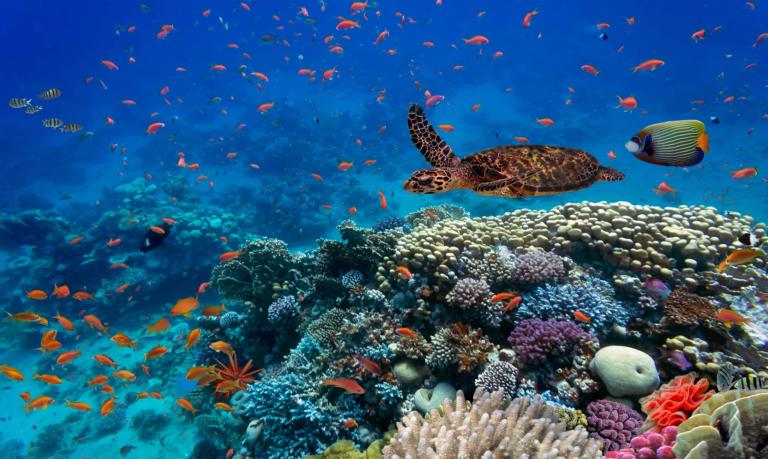
Biodiversity means the variety of life forms on earth. You might first think of beetles, birds and mammals, but this also includes plants, fungi, bacteria and us, too. But biodiversity is even more. The huge variation of life between individuals, populations, communities and ecosystems: this is biodiversity!
We are all connected
Species actually consist of individuals, each with its own unique genetically determined characteristics. Individuals live together in groups or populations. The populations of different species together form a community. In turn, various communities together form an ecosystem in their natural environment. Biodiversity is present on all these levels. Think about the diversity you find in people, for instance, or how different the ecosystem of the Wadden Sea intertidal zone is from that of the Veluwe forests and hills, both in the Netherlands.
All these different types of individuals, organisms and ecosystems are connected with each other. This connectedness is sometimes quite obvious. Bees can’t survive without flowers, whales can’t survive without plankton, many plants can’t survive without fungi. Humans can’t survive without plants, so indirectly we can’t survive without fungi, either. All life depends on other life.
You can compare biodiversity to a tower of building blocks. Various species can appear and disappear, but over time the many species keep each other more or less in balance. But if too many species disappear – if you remove too many of the building blocks – then the balance is disturbed. That’s why it’s important to describe, to understand and to explain all species.
How many species are there?
All over the world, more than 1.75 million different species have been discovered and described. But that’s not even close to the end of the story, because this is only the known biodiversity. Besides this, the real biodiversity exists: scientists estimate the true number of species on earth to be more than 10 million – and that’s not even counting bacteria. No one knows just how many species really exist.
How is it possible that so far we have discovered and described only 20% of all species? It’s because the great diversity of species is not evenly distributed. This is true both worldwide and for each group: we have already discovered far more species of insects, plants and fungi than of vertebrates (animals with backbones). Here’s an example: we know of 1 million insect species as compared to just 45,000 vertebrate species. What’s more, some areas have still hardly been explored. In places such as the deep ocean, the ice fields of Antarctica and the depths of tropical rainforests there are still areas that have hardly been explored by humans.
Studying the diversity of species helps us to understand the differences between communities and ecosystems.